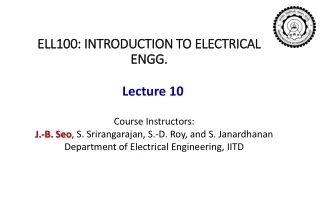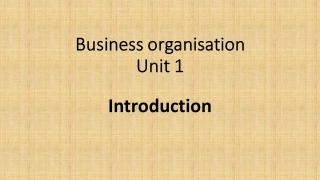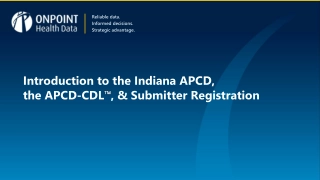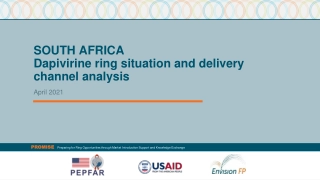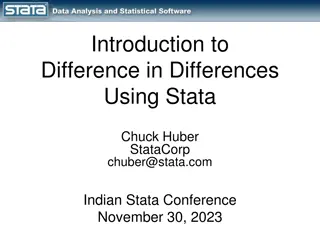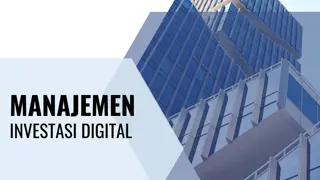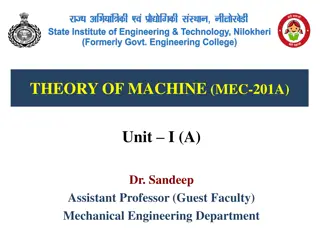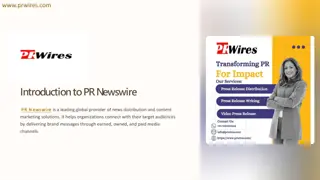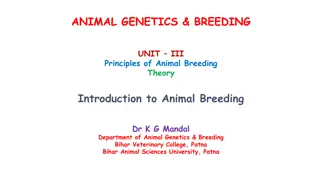
Introduction to IP Networks and TCP/IP Basics
"Explore the fundamentals of IP networks and TCP/IP protocols, covering topics such as packet switching, multiplexing, link characteristics, and network topologies. Learn about connecting hosts, beyond direct connections, and the importance of packet forwarding in data transmission."
Uploaded on | 1 Views
Download Presentation

Please find below an Image/Link to download the presentation.
The content on the website is provided AS IS for your information and personal use only. It may not be sold, licensed, or shared on other websites without obtaining consent from the author. If you encounter any issues during the download, it is possible that the publisher has removed the file from their server.
You are allowed to download the files provided on this website for personal or commercial use, subject to the condition that they are used lawfully. All files are the property of their respective owners.
The content on the website is provided AS IS for your information and personal use only. It may not be sold, licensed, or shared on other websites without obtaining consent from the author.
E N D
Presentation Transcript
TCP/IP Computer Networks Introduction to IP Networks Jos Legatheaux Martins Departamento de Inform tica da FCT/UNL 1
Lecture Outline Basics Links and nodes Packets and multiplexing IP service model Best-effort packet delivery Protocol layering in TCP/IP networks IP as the Internet s narrow waist IP packet structure Fields in the IP header How upper levels use and cooperate with the IP level Using slides from the companion site of James F. Kurose and Keith W. Ross, Computer Networking - A Top-Down Approach Featuring the Internet, Addison Wesley Computer Networks, COS461, Jennifer Rexford, Princeton University, 2007 Edition 2
Links: Delay and Bandwidth Delay Time needed tp propagate data along the link Corresponds to the length of the link Typically measured in mili seconds Bandwidth Amount of data sent (or received) per unit time Corresponds to the width of the link Typically measured in bits per second delay x bandwidth bandwidth 3 delay
Connecting More Than Two Hosts Multi-access link: Ethernet, wireless Single physical link, shared by multiple nodes Limitations on distance and number of nodes Point-to-point links: e.g. fiber-optic cable Only two nodes (separate link per pair of nodes) Limitations on the number of adapters per node point-to-point links multi-access link 4
Beyond Directly-Connected Networks Switched network End hosts at the edge Network nodes that switch traffic Links between the nodes Multiplexing Many end hosts communicate over the network Traffic shares access to the same links 5
Packets Data traffic divided into packets Each packet contains a header (with address) Packets travel separately through network Packet forwarding based on the header Network nodes may store packets temporarily Destination reconstructs the message 6
IP Service Model: Why Packets? Data traffic is bursty Logging in to remote machines Exchanging e-mail messages Don t want to waste bandwidth No traffic exchanged during idle periods Better to allow multiplexing Different transfers share access to same links Packets can be delivered by almost anything RFC 1149: IP Datagrams over Avian Carriers (aka birds) still, packet switching introduces inefficiencies Extra header bits on every packet Flexibility compensates the overhead 8
Why the Internet Protocol ? Different (sub)networks had different options Packet formats Addresses Routing options Management and resource control An interconnection layer Allows interoperation Hides specific network options 9
IP Service: Best-Effort Packet Delivery Packet switching Divide messages into a sequence of packets Headers with source and destination address Best-effort delivery Packets may be lost Packets may be corrupted Packets may be delivered out of order IP network destination source 10
IP Service Model: Why Best-Effort? IP means never having to say you re sorry Don t need to reserve bandwidth and memory Don t need to do error detection & correction Don t need to remember from one packet to next Easier to survive failures Transient disruptions are okay during failover but, applications do want efficient, accurate transfer of data in order, in a timely fashion 11
IP Service: Best-Effort is Enough No error detection or correction Higher-level protocol can provide error checking Successive packets may not follow the same path Not a problem as long as packets reach the destination Packets can be delivered out-of-order Receiver can put packets back in order (if necessary) Packets may be lost or arbitrarily delayed Sender can send the packets again (if desired) No network congestion control (beyond drop ) Sender can slow down in response to loss or delay 12
Example: Transmission Control Protocol Communication service (socket) Ordered, reliable byte stream Simultaneous transmission in both directions Key mechanisms at end hosts Retransmit lost and corrupted packets Discard duplicate packets and put packets in order Flow control to avoid overloading the receiver buffer Congestion control to adapt sending rate to network load TCP connection source network destination 13
Layering in the IP Protocols Telnet HTTP DNS RTP FTP Transmission Control Protocol (TCP) User Datagram Protocol (UDP) Internet Protocol Ethernet SONET ATM 14
The Internet Protocol Suite Applications FTP HTTP NV TFTP UDP TCP TCP UDP Waist IP Data Link NET1 NET2 NETn Physical The Hourglass Model The waist facilitates interoperability 15
Layer Encapsulation User A User B Get index.html Connection ID Source/Destination Link Address 16
Is Layering Harmful? Layer N may duplicate lower level functionality E.g., error recovery to retransmit lost data Layers may need same information E.g., timestamps, maximum transmission unit size Strict adherence to layering may hurt performance E.g., hiding details about what is really going on Some layers are not always cleanly separated Inter-layer dependencies for performance reasons Some dependencies in standards (header checksums) Headers start to get really big Sometimes more header bytes than actual content 17
IP Packet Structure 4-bit Header Length 8-bit 4-bit Version 16-bit Total Length (Bytes) Type of Service (TOS) 3-bit Flags 16-bit Identification 13-bit Fragment Offset 8-bit Time to Live (TTL) 8-bit Protocol 16-bit Header Checksum 32-bit Source IP Address 32-bit Destination IP Address Options (if any) Payload
IP Header: Version, Length, ToS Version number (4 bits) Indicates the version of the IP protocol Necessary to know what other fields to expect Typically 4 (for IPv4), and sometimes 6 (for IPv6) Header length (4 bits) Number of 32-bit words in the header Typically 5 (for a 20-byte IPv4 header) Can be more when IP options are used Type-of-Service (8 bits) Allow packets to be treated differently based on needs E.g., low delay for audio, high bandwidth for bulk transfer 19
IP Header: Length, Fragments, TTL Total length (16 bits) Number of bytes in the packet Maximum size is 63,535 bytes (216 -1) though underlying links may impose harder limits Fragmentation information (32 bits) Packet identifier, flags, and fragment offset Supports dividing a large IP packet into fragments in case a link cannot handle a large IP packet Time-To-Live (8 bits) Used to identify packets stuck in forwarding loops and eventually discard them from the network 20
IP Header: To and From Addresses Two IP addresses Source IP address (32 bits) Destination IP address (32 bits) Destination address Unique identifier for the receiving host Allows each node to make forwarding decisions Source address Unique identifier for the sending host Recipient can decide whether to accept packet Enables recipient to send a reply back to source 21
Source Address: What if Source Lies? Source address should be the sending host But, who s checking, anyway? You could send packets with any source you want Why would someone want to do this? Launch a denial-of-service attack Send excessive packets to the destination to overload the node, or the links leading to the node Evade detection by spoofing But, the victim could identify you by the source address So, you can put someone else s source address in the packets Also, an attack against the spoofed host Spoofed host is wrongly blamed Spoofed host may receive return traffic from the receiver 22
Protocol Demultiplexing Multiple choices at each layer FTP HTTP NV TFTP TCP UDP Network IP TCP/UDP IP Type Field Protocol Field Port Number NET1 NET2 NETn 23
Resource Allocation: Queues Sharing access to limited resources E.g., a link with fixed service rate Simplest case: first-in-first out queue Serve packets in the order they arrive When busy, store arriving packets in a buffer Drop packets when the queue is full 24
Resource Allocation: Congestion Control What if too many folks are sending data? Senders agree to slow down their sending rates in response to their packets getting dropped The essence of TCP congestion control Key to preventing congestion collapse of the Internet 25
Transmission Control Protocol Flow control: window-based Sender limits number of outstanding bytes (window size) Receiver window ensures data does not overflow receiver Congestion control: adapting to packet losses Congestion window tries to avoid overloading the network (increase with successful delivery, decrease with loss) TCP connection starts with small initial congestion window congestion window congestion avoidance slow start time 26
History IP proposed in the early 1970s Defense Advanced Research Project Agency (DARPA) Goal: connect existing networks To develop an effective technique for multiplexed utilization of existing interconnected networks E.g., connect packet radio networks to the ARPAnet Motivating applications Remote login to server machines Inherently bursty traffic with long silent periods 27
Other Main Driving Goals (In Order) Communication should continue despite failures Survive equipment failure or physical attack Traffic between two hosts continue on another path Support multiple types of communication services Differing requirements for speed, latency, & reliability Bidirectional reliable delivery vs. message service Accommodate a variety of networks Both military and commercial facilities Minimize assumptions about the underlying network 28
Other Driving Goals, (Not ?) Met Permit distributed management of resources Nodes managed by different institutions though this is still rather challenging Cost-effectiveness Statistical multiplexing through packet switching though packet headers and retransmissions wasteful Ease of attaching new hosts Standard implementations of end-host protocols though still need a fair amount of end-host software Accountability for use of resources Monitoring functions in the nodes though this is still fairly limited and immature 29
The Landscape is Changing The Internet is increasingly becoming an pervasive heterogeneous network The edge will become predominantly mobile Multi-point communication paradigms are emergent Security and malicious communication patterns abounding Researchers have identified several architectural obstacles Addresses and identifiers Security Layering Services and protocols Resource usage and billing 30
Drawbacks The Price of Success The security and authorization models are too na ve and are showing their limitations Mobility and multi-point diffusion are difficult to deal with addresses, identifiers, transport protocols, Many new applications and protocols require new ways to deal with layering Overlay networks are just a short term solution ? Resource usage and billing models are also showing some limitations Service providers do not know how to bill new services 31
Paths to the Future Current Internet is basically flawed one should build a new one Clean slate approach Current Internet cannot be abruptly replaced. We must proceed studying alternatives subject to real users, applications and load Evolutionary approach 32
Conclusion Success Packet switching Layering, Best effort model, End-to-end principles Support of heterogeneity, several types of links, Multiple services, Scale Problems Security, Management, Layering and adaptability, End-to-end principles Resource usage model 33
Written assignment Each student must produce a written report of at most 5 pages (12 dots, double spaced) on the subject of one of the following papers: J. Saltzer, D. Reed ad D. Clark, End-to-End Arguments in System Design, ACM Transactions on Computer Systems (4):277-288, November 1984 Deliver date: in the class of September, 18 th 34

